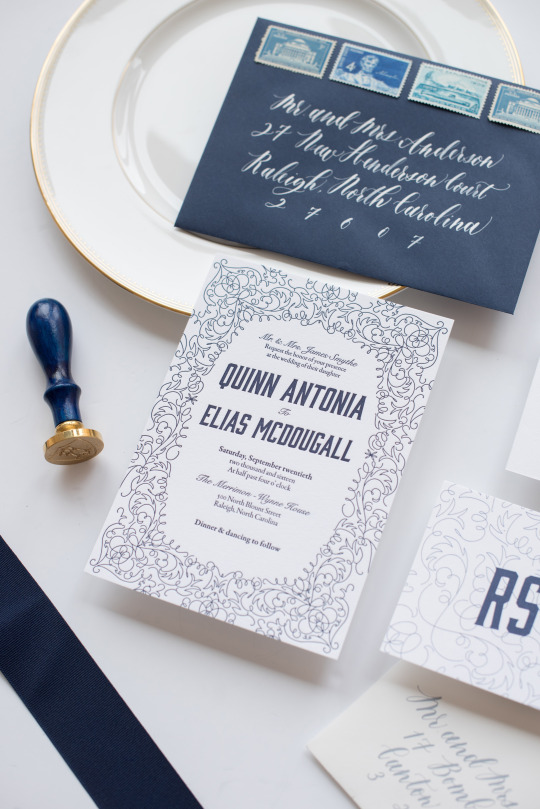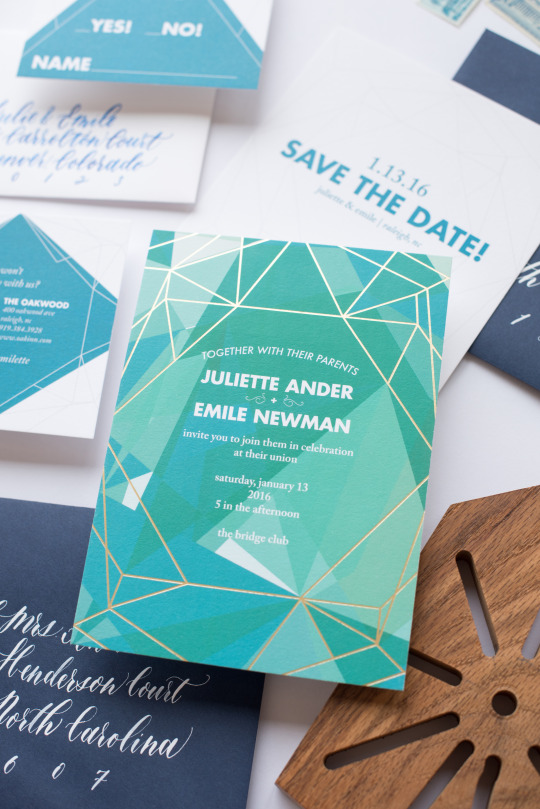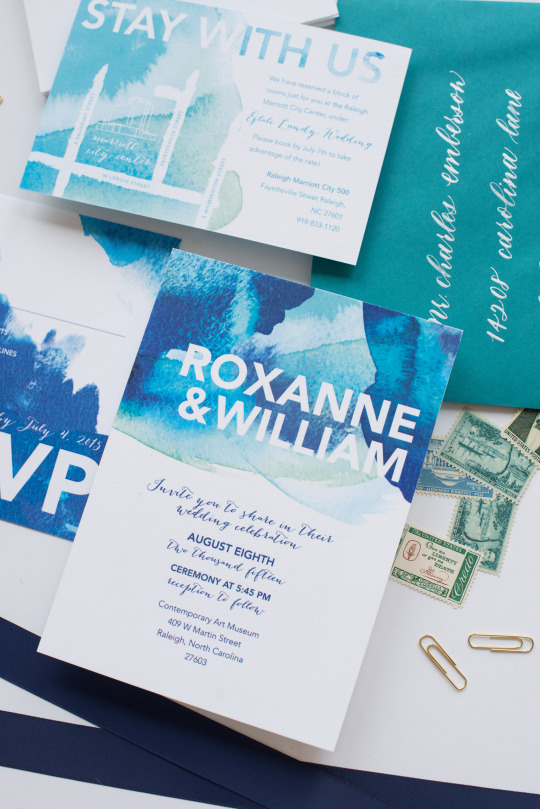A Guide to Printing Processes
Printing processes can be pretty confusing, if you’re not in the know. The difference between all the different options, the effect on pricing, and the list of requirements for each process can be a little overwhelming when it comes to choosing what’s best for your invitations. We get a lot of questions about these differences, so we thought we would put together this handy guide for your reference.

_photo by Mikkel Paige Photography _
_Fine detail is a great option for letterpress printing, as the additional texture really makes the lines pop. _
Letterpress Printing
Letterpress is a printing technique dating back to the 1400s. A print is made by ‘pressing’ an inked plate into paper, creating a deep impression in the paper, and providing a textured and classic feel for your wedding invitations. We believe that letterpress adds a level and quality of craftsmanship that is hard to replicate, and once you hold a letterpress invitation in your hand, you’ll see what we’re talking about. Letterpress printing is a single color process, meaning that each plate lays down a single, flat color. Additional colors require additional plates, and we can accommodate up to 3 colors. If you want your invitations to include gradients, photos, or designs with more than three colors, letterpress is not for you. If you are crazy about texture, want something that feels very special, and have a limited color palette, you should consider letterpress printing.

photo by Mikkel Paige Photography
_A single color foil invitation. This invitation is printed in a matte gold, which gives less shine than regular gold. _
Foil Stamping
Foil stamping is perfect for those who want a little shine with their invitations! A heated die is stamped onto the foil, making it adhere to your paper, leaving a shiny, solid impression. It tends to be one of the more expensive processes, so keep that in mind when considering foil stamped invitations. If you don’t care about having a metallic look, foil is not for you. If you are crazy about that shine, want to take your invitations to the next level, and have a little money to spend, foil is a great option.

photo by Mikkel Paige Photography
_Offset printing is paired here with foil stamping for a colorful and textural effect. _
Offset Printing
Offset printing is a printing technique where your inked image is transferred from a plate, to a rubber blanket, and then to your paper. It allows for unlimited colors, and is perfect for when you want large sections of solid color. Unlike letterpress and foil stamping, it does not disturb the surface of your paper, meaning your invitation will be flat and smooth. If you have a limited color palette, and lower budget, offset printing is not a good option for you. If you want a lot of colors in your design, and want the printing quality to be as high as possible, this is the option for you!

photo by Mikkel Paige Photography
_This suite is a great example of how to best use digital printing to its fullest advantage. The many colors and gradients are wonderfully suited to this medium, and the modern design lends itself to a flat finish. _
Digital Printing
Digital printing is the best option for those with lower budgets. Digitally printed invitations are often printed using a color laser printer, or an inkjet. The quality of the printer will be higher than you you can get at home, but the cost per piece is still very low, and it allows you the same level of flexibility that offset printing does, without the higher price tag. The drawback is that your print quality might not be as high - digital printing does not handle fine detail as well as other processes, and you won’t get the same vibrancy as you would with flat ink on paper. That being said, you’d be surprised at what could be accomplished with choosing the right paper stocks, and we think it’s a great option for secondary cards - you can get all the bells and whistles on your invitation, and round out the suite with digitally printed cards. If you have a higher budget, and want your printing to feel extra special, this is not the process for you. If you are on a lower budget, but you still want a rounded out invitation suite, this is a great solution!
There are many more printing methods, but these are the ones that are most popular with our clients! Do you have any questions about other printing methodologies? If so, leave us a comment, and we’ll do our best to answer your question!
